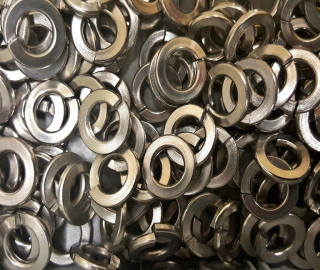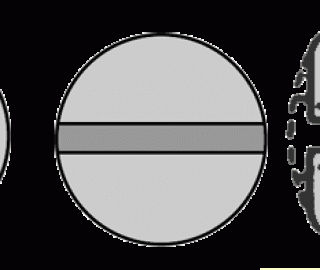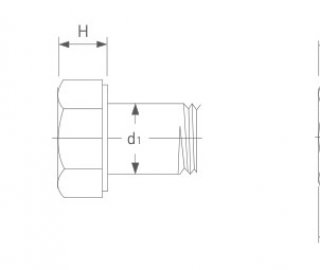
In most cases, the strength of a given material used to make a fastener has strength requirements or parameters described as pounds per square inch (psi) or thousands of pounds per square inch (ksi). This is helpful when analyzing what grade of material should be used for a given application, but this doesn’t tell us the actual strength of that diameter of material. In order to calculate the actual strength values of a given diameter, you would use the following formulas:
Note: the formulas below do not depend on the finish of the fastener.
Ultimate Yield Strength
Take the minimum yield in psi of the ASTM grade (see our Strength Requirements by Grade Chart for this value), multiplied by the stress area of the specific diameter (see our Thread Pitch Chart). This formula will give you the ultimate yield strength of that size and grade of bolt.
Example: What is the ultimate yield strength of a 3/4″ diameter F1554 Grade 36 rod?
This is the minimum requirement for F1554 grade 36. In other words, a 3/4″ diameter F1554 grade 36 anchor rod will be able to withstand 12,024 pounds force (lbf) without yielding.
Ultimate Tensile Strength
Take the minimum tensile strength in psi of the ASTM grade, multiplied by the stress area of the diameter. This formula will give you the ultimate tensile strength of that size and grade of bolt.
Example: What is the ultimate tensile strength of a 3/4″ diameter F1554 Grade 36 rod?
This is the minimum requirement for F1554 grade 36. In other words, a 3/4″ diameter F1554 grade 36 anchor rod will be able to withstand 19,372 pounds force (lbf) without breaking.
Shear Strength
First, find the ultimate tensile strength using the formula above. Take that value and multiply it by 60% (0.60). It is important to understand that this value is only an estimate. Unlike tensile and yield strengths, there are no published shear strength values or requirements for ASTM specifications. The Industrial Fastener Institute (Inch Fastener Standards, 7th ed. 2003. B-8) states that shear strength is approximately 60% of the minimum tensile strength.
Sourced by ekomeri







